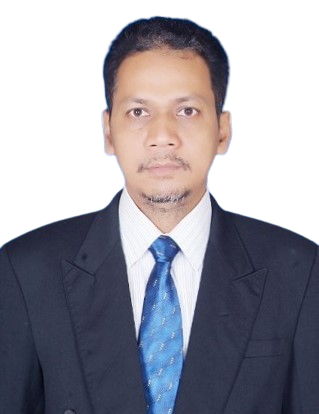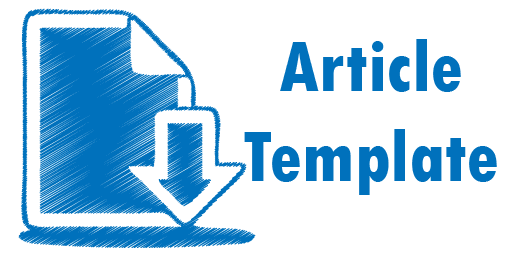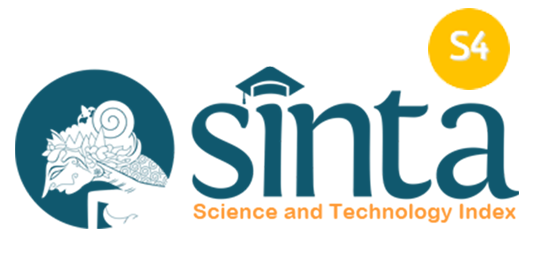Analisis Literasi Sains Siswa SMP Berakreditasi A di Banjarmasin
Abstract
Laporan dari PISA menunjukkan bahwa literasi sains Indonesia masih berada di 10 besar terendah di seluruh negara peserta PISA sejak tahun 2006 hingga 2018. Namun kurangnya informasi sehubungan dengan ruang sampling penelitian PISA yang digunakan dalam tes PISA yang dilakukan oleh OECD dan belum tersedianya alat tes standar yang dapat diakses dengan mudah untuk menilai literasi sains membuat sebagian besar praktisi pendidikan di Indonesia tidak memiliki gambaran yang jelas tentang kondisi literasi sains siswanya. Dengan menggunakan instrumen yang telah dikembangkan oleh peneliti sebelumnya, penelitian ini dilakukan untuk mengetahui dan menganalisis kondisi literasi sains siswa di salah satu SMP Negeri Terakreditasi A di Banjarmasin. Penelitian ini merupakan penelitian kuantitatif yang pengumpulan datanya menggunakan alat tes literasi sains kontekstual lahan basah Kalimantan Selatan. Peserta tes terdiri dari 106 siswa kelas 8 dan kelas 9 di SMP Negeri Banjarmasin. Hasil analisis menunjukkan bahwa secara umum nilai literasi sains siswa secara keseluruhan masih rendah dengan ketuntasan 40,56%. Menjelaskan fenomena secara ilmiah menempati urutan kedua dengan ketuntasan 42%. Mengevaluasi dan merancang investigasi ilmiah menempati urutan ketiga dengan penyelesaian 32%, sedangkan untuk menginterpretasikan data dan bukti ilmiah menempati urutan pertama dengan penyelesaian 48%. Uji Mann Whitney menunjukkan bahwa hanya sejumlah kecil korelasi antar kompetensi. Penulis mempertimbangkan kemungkinan bahwa penguasaan kompetensi literasi sains tidak harus dikembangkan secara bertahap seperti yang disarankan oleh taksonomi kognitif Bloom. Pendidik harus mempertimbangkan pendekatan alternatif dalam mengajar literasi sains tanpa hanya mengandalkan pengajaran yang didasarkan pada struktur hierarki kognitif Taksonomi Bloom.
The report from PISA shows that Indonesia's science literacy is still in the top 10 lowest in all PISA participating countries from 2006 to 2018. However, the lack of information in connection with the PISA research sampling room used in the PISA test conducted by the OECD and the unavailability of accessible, standardized test kits for assessing scientific literacy resulted in most education practitioners in Indonesia not having a clear picture of the condition of their students' science literacy. Using instruments that previous researchers have developed, this study was conducted to find out and analyze students' condition of science literacy in one of the A Accredited State Junior High Schools in Banjarmasin. This study is a quantitative study whose data collection uses the South Kalimantan Wetlands-Contextual Science Literacy test tool. The test participants comprised 106 students from grades 8 and 9 at an SMP Negeri in Banjarmasin. The analysis showed that, in general, the overall science literacy score of students was still low, with completion of 40.56%. Explaining phenomena scientifically is at the second rank with a 42% completion. Evaluating and designing scientific investigations is at the third rank with a completion of 32%, while interpreting data and scientific evidence is of the first rank with a completion of 48%. Mann Whitney's test showed only a very small correlation between competencies. Authors considered that mastery of science literacy competence was not developed gradually as suggested by Bloom's cognitive taxonomy. Educators should consider an alternative approach to teaching scientific literacy without relying solely on teaching tactics based on Bloom's Taxonomy's cognitive hierarchy structure.
Keywords
Full Text:
PDFReferences
Chang, S., & Chiu, M.-H. (2005). The development of authentic assessments to investigate ninth graders’ scientific literacy: In the case of scientific cognition concerning the concepts of chemistry and physics. International Journal of Science and Mathematics Education, 3(1), 117–140. https://doi.org/10.1007/s10763-004-5239-0
Firdausy, B. A., & Prasetyo, Z. K. (2020). Improving scientific literacy through an interactive e-book: a literature review. Journal of Physics: Conference …, (Query date: 2020-08-14 14:24:03).
Gormally, C., Brickman, P., & Lutz, M. (2012). Developing a test of scientific literacy skills (TOSLS): Measuring undergraduates’ evaluation of scientific information and arguments. CBE Life Sciences Education, 11(4), 364–377. https://doi.org/10.1187/cbe.12-03-0026
Indonesia. (2018). Peraturan Menteri Pendidikan Dan Kebudayaan Republik Indonesia Nomor 37 Tahun 2018. Tentang Perubahan Atas Peraturan Menteri Pendidikan Dan Kebudayaan Nomor 24 Tahun 2016 Tentang Kompetensi Inti Dan Kompetensi Dasar Pelajaran Pada Kurikulum 2013 Pada Pe. Indonesia: Kementerian Pendidikan dan Kebudayaan.
Istyadji, M., & Sauqina, S. (2021). Pengembangan instrumen tes literasi sains dengan konteks lahan basah kalimantan selatan berbentuk cetak dan digital. Banjarmasin.
Juleha, S., Nugraha, I., & Feranie, S. (2019). The effect of project in problem-based learning on students’ scientific and information literacy in learning human excretory system. Journal of Science Learning, (Query date: 2020-08-14 14:24:03).
Kadir, K. (2017). Statistika terapan: Konsep, contoh dan analisis data dengan program spss/lisrel dalam penelitian. Depok: Rajawali Press.
Millar, R. (1997). Science education for democracy. What can the school curriculum achieve? In Science today: problem or crisis? (pp. 87–101). London: Routledge Ltd.
Miller, J. D. (1983). Scientific Literacy: A Conceptual and Empirical Review. Daedalus, 112(2), 29–48.
Naganuma, S. (2017). An assessment of civic scientific literacy in Japan: development of a more authentic assessment task and scoring rubric. International Journal of Science Education, Part B: Communication and Public Engagement, 7(4), 301–322. https://doi.org/10.1080/21548455.2017.1323131
O’Grady, K., & Houme, K. P. (2015). PCAP 2013: Report on the pan-Canadian assessment of science, reading, and mathematics. Canada: Council of Ministers of Education, Canada.
OECD. (2017). PISA 2015 assessment and analytical framework science, reading, mathematic, financial literacy and collaborative problem solving, revised edition. Paris: PISA, OECD Publishing. https://doi.org/http://dx.doi.org/10.1787/9789264281820-en
OECD. (2019a). PISA 2018 Assessment and Analytical Framework. In OECD Publishing. Paris: OECD Publisher.
OECD. (2019b). PISA 2018 results what students know and can do. Paris: OECD Publishing.
Riduan, M., Kusasi, M., & Almubarak, A. (2021). Pengembangan e-modul berbasis model scientific critical thinking (sct) untuk meningatkan literasi sains dan hasil belajar peserta didik pada materi larutan penyangga. JCAE (Journal of Chemistry And Education), 5(2), 44–56.
Sastradika, D., & Jumadi. (2018). Development of subject-specific pedagogy based on guided inquiry about newton’s law to improve senior high school students’ scientific literacy ability. Journal of Physics: Conference Series, 1097(1). https://doi.org/10.1088/1742-6596/1097/1/012017
Sholahuddin, A., Sari, M. M., Amin, C., & Muslim, M. (2021). Tingkat literasi sains siswa smp kotamadya banjarmasin. Prosiding Magister Pendidikan Ilmu Pengetahuan Alam, 1(1).
United Kingdom. (2015). Statutory guidance national curriculum in england: science programmes of study. United Kingdom.
DOI: https://doi.org/10.20527/jmscedu.v2i1.5220
Refbacks
- There are currently no refbacks.

This work is licensed under a Creative Commons Attribution 4.0 International License.

Journal Of Mathematics Science and Computer Education is licensed under a Creative Commons Attribution-ShareAlike 4.0 International License.









.jpg)
1.png)

